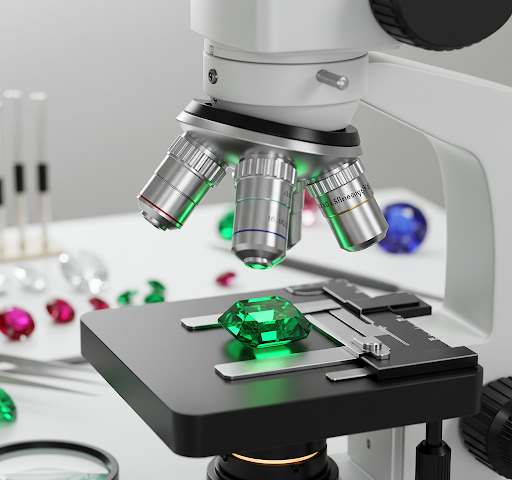
Jewelry Appraisal Online vs. In Person: Which is Best?
July 24, 2025
Agarwood Price: Skyrocketing or Stable? – Latest Updates
July 27, 2025Hi friends, I’m Chuong Gems from Vietnam. Today, I’m excited to share with you my insights about gemstone microscopes – an essential tool that reveals the hidden beauty and characteristics of precious gems.
The Importance of Gemstone Microscopes in Gemology
As a gemologist, I can’t emphasize enough how crucial microscopes are in our field. These powerful instruments allow us to see what’s invisible to the naked eye, helping us understand the true nature and quality of gemstones. They’re not just tools; they’re our windows into the microscopic world of gems.
Common Types of Gemstone Microscopes
- The Gemological Microscope: Specifically designed for examining gems, featuring specialized lighting and holding fixtures
- The Stereomicroscope: Provides a three-dimensional view, perfect for studying surface features and inclusions
- The Digital Microscope: Modern option with photography capabilities, allowing us to document our findings
How to Use a Gemstone Microscope Effectively
From my years of experience, I’ve learned that proper microscope usage is both an art and a science. Here are the essential steps:
- Proper Setup: Ensure good lighting and stable positioning of the gem
- Focus Adjustment: Start with low magnification and gradually increase as needed
- Lighting Techniques: Use different lighting methods (darkfield, brightfield, oblique) to reveal different features
- Systematic Examination: Always examine the entire stone systematically to avoid missing important details
Real-World Examples: What We Can See
Let me share some fascinating discoveries I’ve made using microscopes:
- Natural Ruby: Distinctive silk inclusions and growth patterns that confirm natural origin
- Emerald Inclusions: Three-phase inclusions that help identify Colombian emeralds
- Diamond Clarity: Internal characteristics that determine a diamond’s clarity grade
Benefits of Microscopic Examination
In my practice, microscopic examination has proven invaluable for:
- Authentication: Distinguishing natural gems from synthetic ones
- Quality Assessment: Evaluating clarity and identifying treatment processes
- Documentation: Creating detailed records of unique identifying characteristics
- Education: Teaching others about gemstone characteristics and identification
Through my journey in gemology, I’ve found that the microscope is more than just a tool – it’s a trusted partner in unveiling the mysteries and beauty of gemstones. Whether you’re a professional gemologist or an enthusiast, understanding how to use a gemstone microscope opens up a whole new world of discovery.
Remember, every gemstone tells a story, and with a microscope, we can read these stories in incredible detail.




